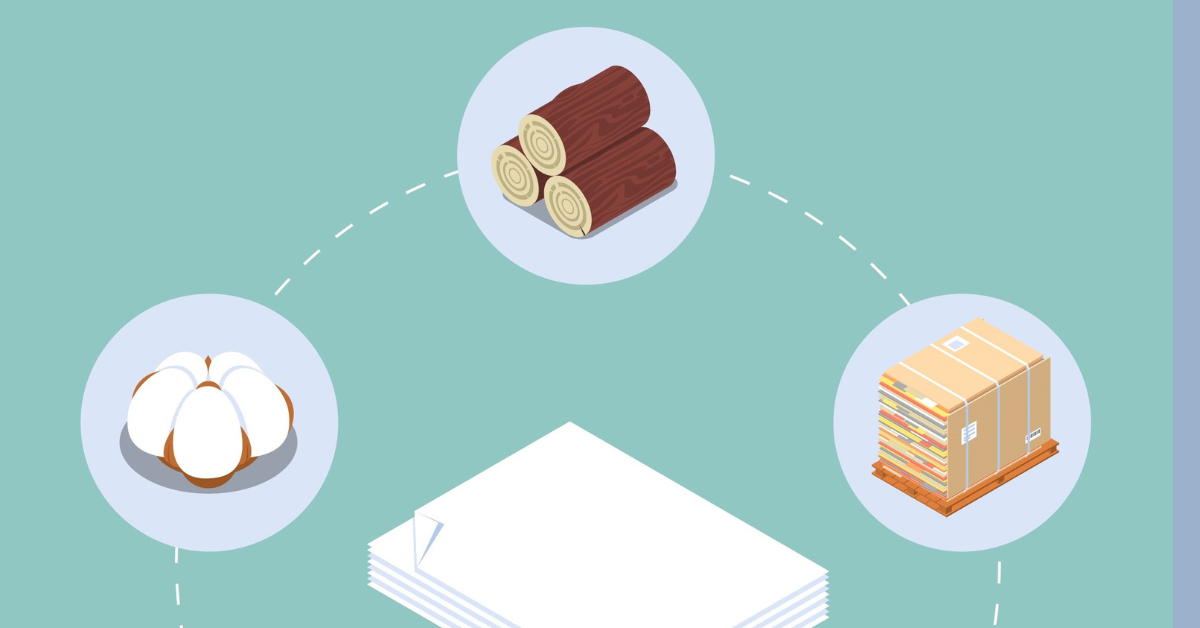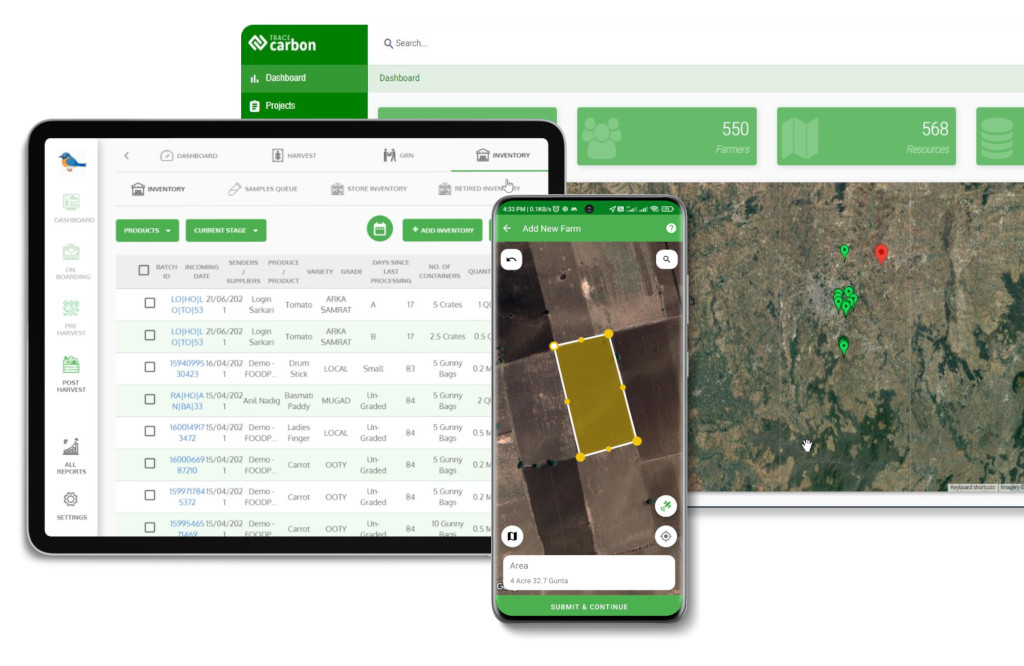Contact: +91 99725 24322 |
Menu
Menu
Quick summary: Learn how segregation works in the EUDR pulp value chain—keeping compliant and noncompliant fiber streams separate through procurement, storage, processing, and export to maintain chain of custody and meet EU sustainability regulations.

Segregation in the EUDR pulp value chain means keeping compliant and noncompliant fiber streams physically and digitally separate to maintain chain of custody. Mills must store, process, and transport EUDR verified pulp in dedicated silos, lines, or batches, with unique identifiers and audit ready records. This ensures that only fiber proven to be deforestation-free and legally sourced is placed on the EU market. According to the European Commission’s EUDR guidelines, operators must implement systems—such as physical segregation or mass balance accounting—to demonstrate that compliant outputs never exceed verified inputs.
Segregation is one of the most effective ways to maintain a chain of custody, allowing mills to demonstrate exactly where their inputs came from and prove that only deforestation free, legally sourced pulp enters the EU market.
The stakes are high: without proper segregation, mills risk losing market access, facing regulatory penalties, or damaging their reputation with sustainability focused EU buyers. Discover how mills can implement segregation practices and stay fully audit ready under EUDR.
Key Takeaways
The EU Deforestation Regulation (EUDR) mandates that any pulp or paper product placed on the EU market must be proven deforestation free and legally sourced. This isn’t just a declaration—it requires verifiable evidence at every stage of the value chain, driving mills and exporters to adopt segregation as a core operational practice.
Mills must submit a DDS through EU TRACES that includes:
For pulp, often sourced from multiple plantations or aggregators, this means building digital supplier profiles with exact polygon boundaries—something only scalable with tech platforms, not manual spreadsheets.
The EUDR requires a clear chain of custody, proving that compliant inputs remain separate from unverified or noncompliant material throughout storage, processing, and transportation.
Forward-thinking mills see this not as a burden but as a chance to showcase operational discipline and win trust from premium buyers demanding transparency.
All DDS data, geolocation maps, and chain of custody records must be kept for a minimum of five years, ready for inspection by EU authorities.
Maintaining such records also delivers internal benefits—supporting ESG reporting, enabling performance analytics, and helping mills benchmark supplier compliance over time.
Segregation isn’t just about following rules—it creates a competitive edge. Mills that integrate segregation workflows with traceability tech can turn compliance into a marketing advantage, positioning themselves as leaders in sustainable sourcing rather than simply reacting to regulation.
Dive into our expert blogs on
to see exactly what regulators expect—and how you can stay ahead.
When pulp mills receive fiber from plantations, brokers, or aggregators, suppliers are first classified as EUDR compliant or noncompliant based on their submitted Due Diligence Statement (DDS) and supporting geolocation data.
Compliant and noncompliant pulp are stored in dedicated silos, warehouses, or clearly marked bays, ensuring physical separation.
Inside the mill, segregation continues through separate processing lines or controlled scheduling:
Before pulp leaves the facility, segregation practices extend into shipping and export documentation:
Segregation isn’t just a compliance requirement—it’s becoming a strategic advantage. Mills that invest in technology driven segregation workflows not only stay EUDR ready but also unlock better inventory control, stronger supplier partnerships, and more trust from EU buyers.
Before:
Mills often struggle to allocate separate silos or storage bays for compliant and noncompliant pulp. Limited floor space leads to adhoc segregation methods—labels on pallets, handwritten logs—that are prone to mixups.
After (with Technology):
Traceability platforms assign digital identities to each batch and integrate with warehouse management systems. Even in shared physical spaces, mills can track material movement digitally, ensuring that each compliant batch is clearly logged, monitored, and never incorrectly assigned.
Before:
Staff rely on paper instructions or memory to follow segregation rules. Missteps in handling—such as using the wrong storage bay—go unnoticed until audits, creating costly compliance risks.
After (with Technology):
With Realtime alerts and mobile apps, operators receive instant notifications if a compliant batch is moved or processed in the wrong area. Digital SOPs built into the platform guide staff through each step, reducing human error and improving accountability.
Before:
Traditional ERPs and inventory systems track bulk stock but lack granularity. A single entry might represent material from multiple suppliers, leaving no way to demonstrate chain of custody for each batch.
After (with Technology):
ERP integrations with specialized traceability platforms allow batch level tracking—every load of pulp has a unique ID tied to its supplier’s DDS, geolocation data, and compliance status. Auditors can instantly see a material’s history from forest to shipping container.
Before:
Mills invest time and money in duplicate storage, manual audits, and constant rechecking to prevent errors, while still risking EU shipment rejections if something slips through.
After (with Technology):
AI validation tools automatically check supplier polygons and DDS data before material is received, eliminating costly rework. Digital systems reduce duplicate processes, optimize storage use, and provide continuous compliance visibility—cutting operational costs while safeguarding market access.
With technology, segregation stops being a heavy operational burden and becomes a streamlined, proactive system. Mills gain:

Before
Mills often rely on fragmented spreadsheets and physical logs, making it hard to see where segregation or documentation falls short.
With TraceX
Our platform provides a single dashboard to map your existing storage, processing lines, and supplier data against EUDR requirements. Built-in analytics instantly highlight compliance gaps—whether it’s missing geolocation data, unverified suppliers, or areas where commingling risks exist.
Before
Physical segregation alone is expensive and error-prone, requiring extra silos, duplicate workflows, and manual oversight.
With TraceX
You gain digital batch IDs, QR codes, and automated chain of custody records. Instead of relying solely on physical separation, our Agentic AI tracks compliant material in real time across procurement, storage, processing, and export—optimizing your existing infrastructure.
Before
Teams are often overwhelmed by new regulations, leading to inconsistent practices and compliance risks.
With TraceX
Intuitive, field ready interfaces and Realtime alerts guide your staff step by step. From warehouse operators to compliance managers, everyone follows clear digital workflows with AI assistance, reducing human error and ensuring segregation rules are enforced.
By combining these steps with TraceX’s Agentic AI features—polygon validation, DDS automation, and ERP integrations—you’re not just staying compliant; you’re building a smarter, audit ready supply chain that buyers trust and reward.
Segregation isn’t just a regulatory checkbox—it’s a way to stand out in an increasingly demanding market. Mills and exporters that can prove, with precision, that their pulp is kept separate, traceable, and verifiably deforestation free gain far more than compliance. They unlock access to premium EU buyers, strengthen their ESG credentials, and build a reputation for operational excellence. With TraceX’s Agentic AI platform, segregation becomes seamless and data driven, turning what was once a costly challenge into a powerful differentiator that drives trust, market access, and longterm growth.
Want deeper insights into staying EUDRready?
Explore our blogs on
How traceability drives compliance
The impact of EUDR on the paper and pulp industry
packed with expert tips, real examples, and actionable strategies.
Segregation means physically and digitally separating compliant and noncompliant fiber streams throughout procurement, storage, processing, and export, ensuring only verified deforestation-free pulp reaches EU markets.
Segregation maintains chain of custody, proving to regulators and buyers that all pulp is legally sourced and deforestation-free, which protects market access and avoids penalties.
Mills can use dedicated storage and processing lines, digital batch IDs, QR codes, and traceability platforms like TraceX to track and audit every batch in real time.
